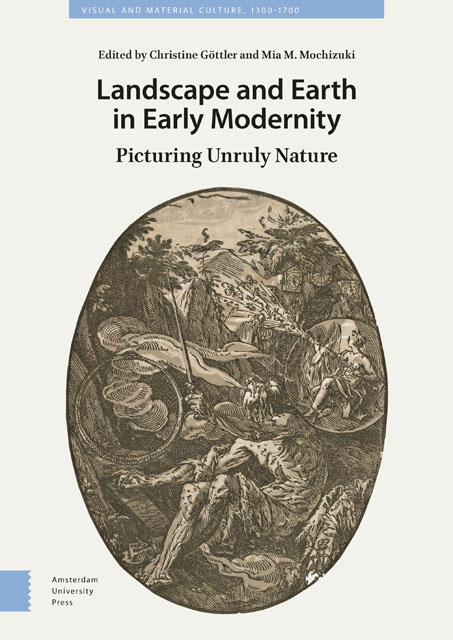3 - Painted Landscape before Landscape Painting in Early Modern England
Published online by Cambridge University Press: 20 June 2023
Summary
Abstract
This paper investigates the period before landscape painting was regarded as an autonomous genre and became a key concept of British national identity—that is, in paintings of the sixteenth and seventeenth centuries. Painting landscapes then regularly appears as the task of developing a spatial-plastic continuum; beginning from the foreground, the painter works, layer by layer, toward the most distant point in the depth of the pictorial space, revealing different layers or steps of visibility.
Keywords: landscape painting; early modern England; parergon; argument; foreground; background
In England, landscapes were initially only painted as backgrounds for portraits and typically represented the parks or estates of a landowner. It has often been said that British landscape painting began with Thomas Gainsborough and Richard Wilson, yet little has been done to show what was happening in landscape painting in England before them or what their primary inspiration may have been. Therefore, in this chapter, I would like to investigate the period before landscape painting was regarded as an autonomous genre and became a key aspect of British national identity by looking at paintings from the early seventeenth century. Great pre- English Civil War collections, such as those of Charles I, the Duke of Buckingham, and the Countess of Arundel, included landscapes by Annibale Carracci, Adam Elsheimer, Paul Bril, and Cornelis van Poelenburgh, as well as a few by Flemish masters, such as Jan Brueghel the Elder, Joos de Momper, and Roelant Savery. Peter Paul Rubens painted the magnificent St. George and the Dragon for Charles I when he visited England in 1629/30 (Fig. 3.1). The presence of such pictures in England was a sign of a changing attitude toward landscape painting that had begun to make itself felt early that century.
“A small Landskip drawn by Sir Nath: Bacon”
Created just a short time before Rubens's St. George, presumably in the early 1620s, this Landscape, painted by Nathaniel Bacon (1585–1627) in oil on copper, is considered a prime example of early modern English landscape painting, and this in spite of the fact that it measures only 7.1 × 10.7 cm (Fig. 3.2). “Freely painted in a range of impasto greens, browns and greys, this little picture shows a tree-topped rock at the center, up which ascend a tiny horseman and a figure on foot.
- Type
- Chapter
- Information
- Landscape and Earth in Early ModernityPicturing Unruly Nature, pp. 153 - 178Publisher: Amsterdam University PressPrint publication year: 2022



